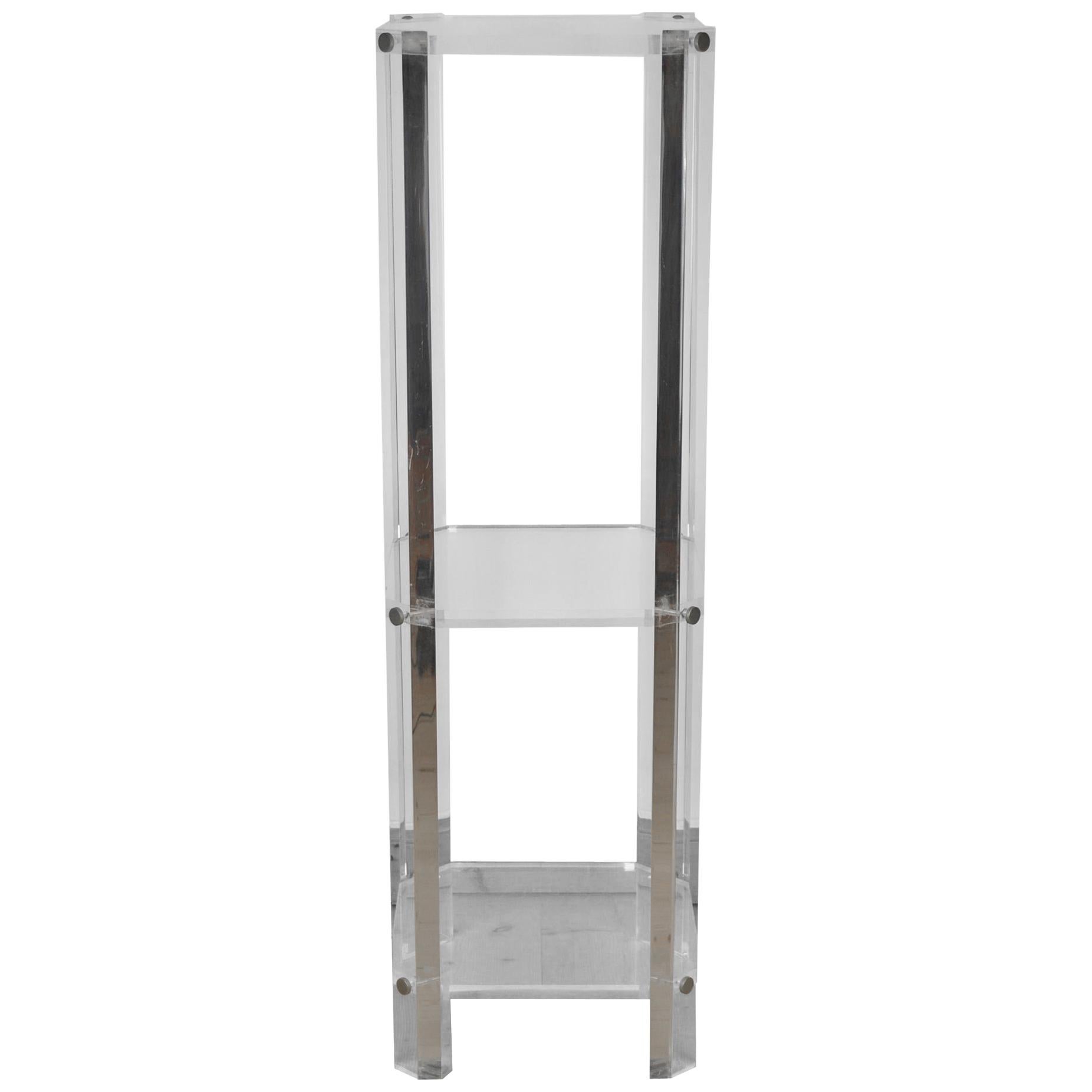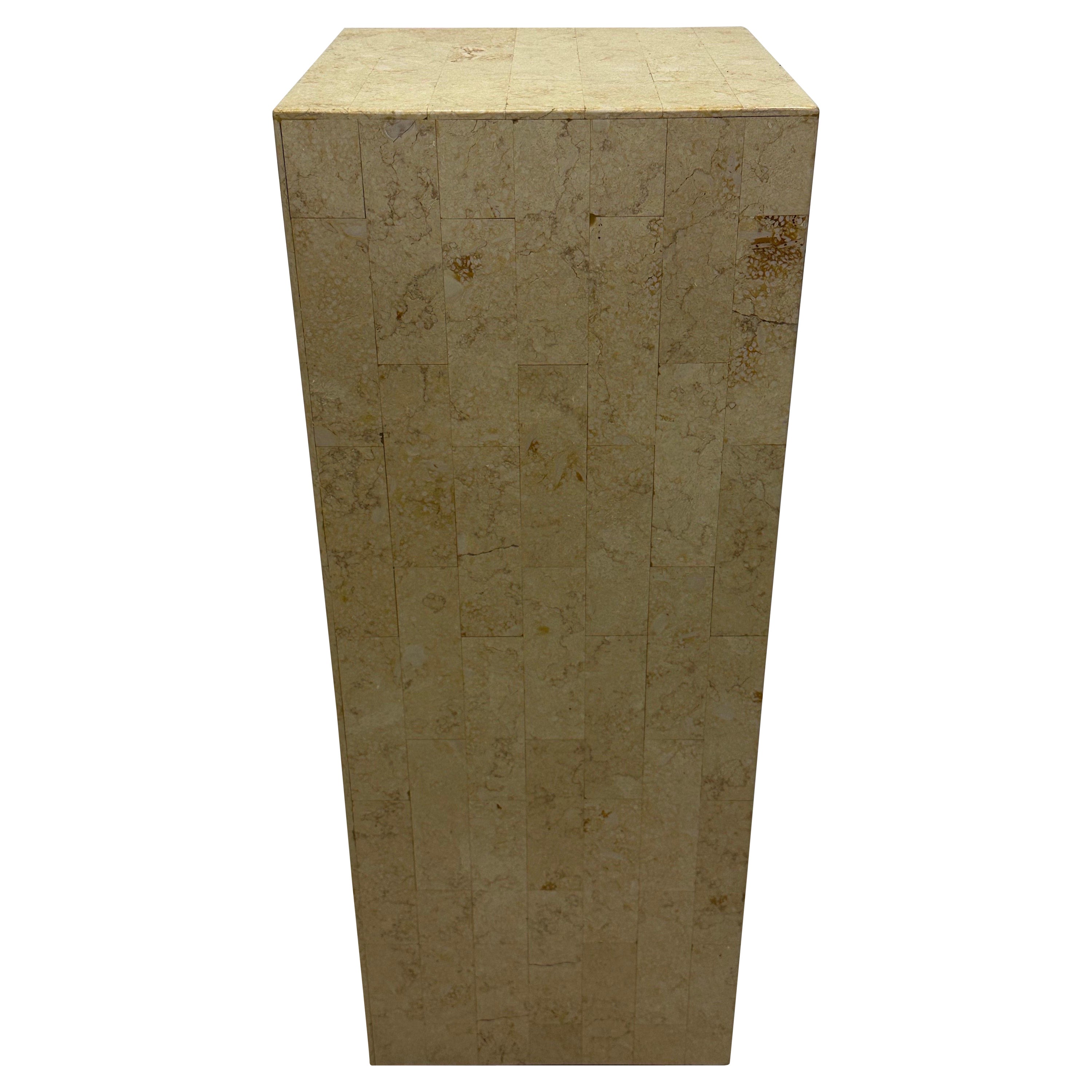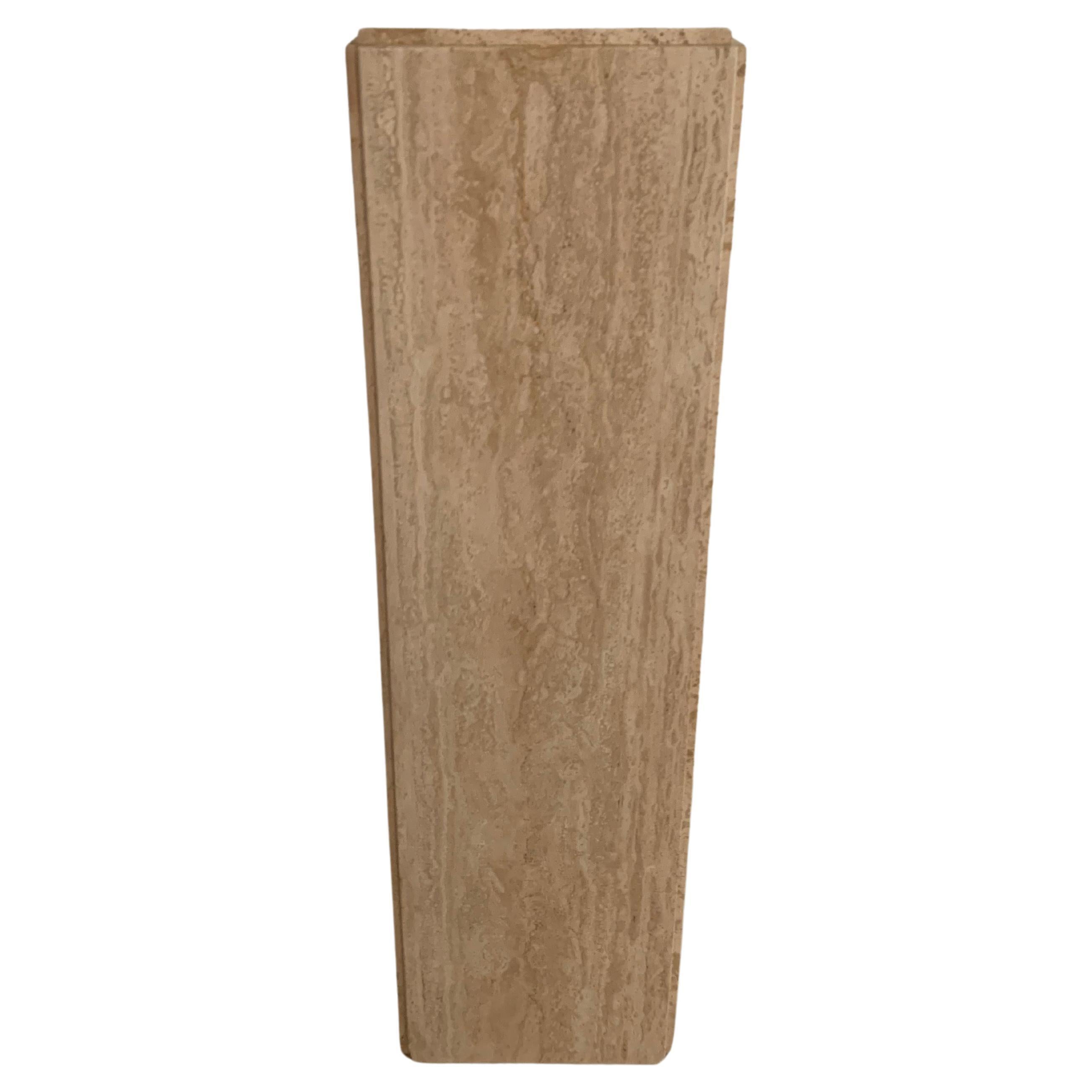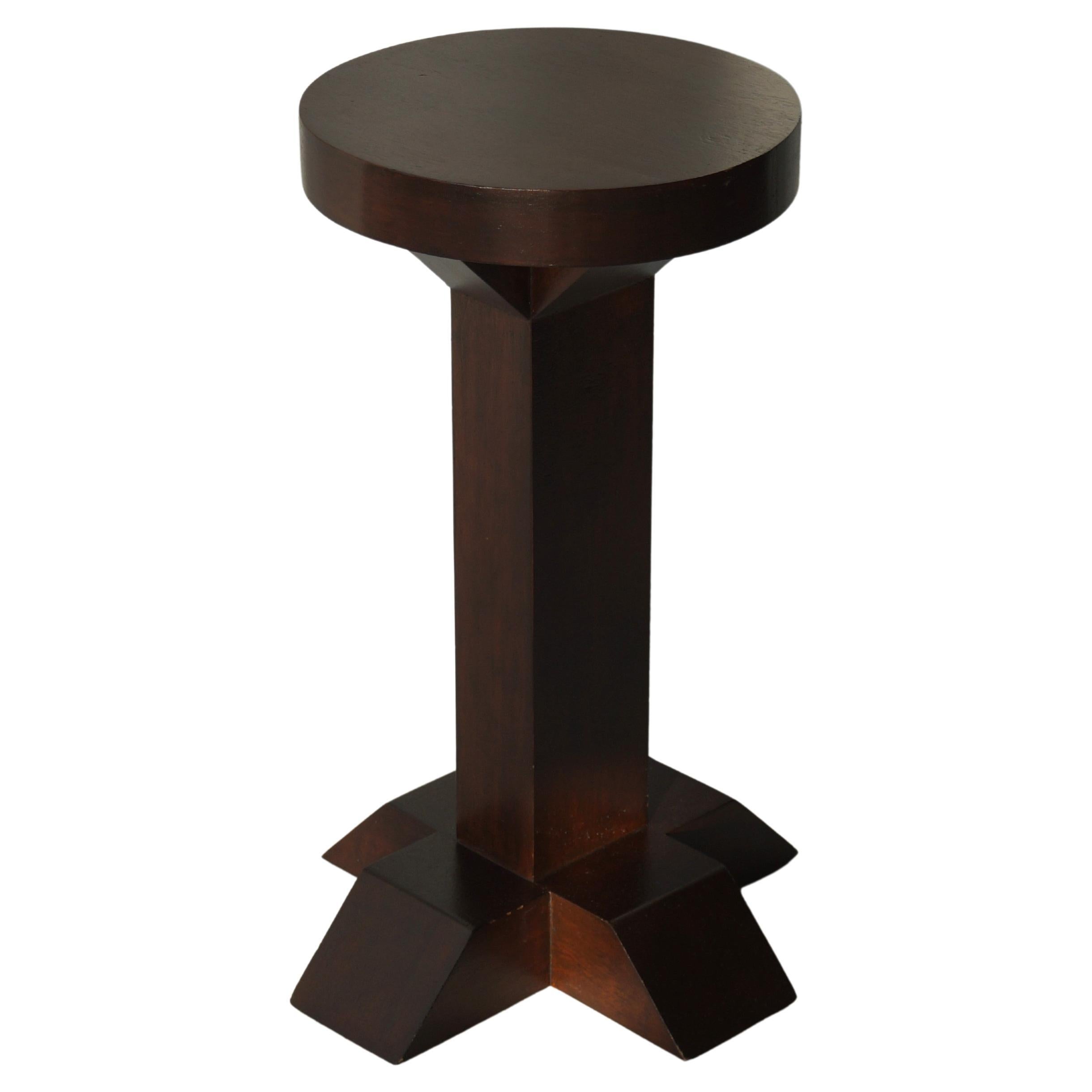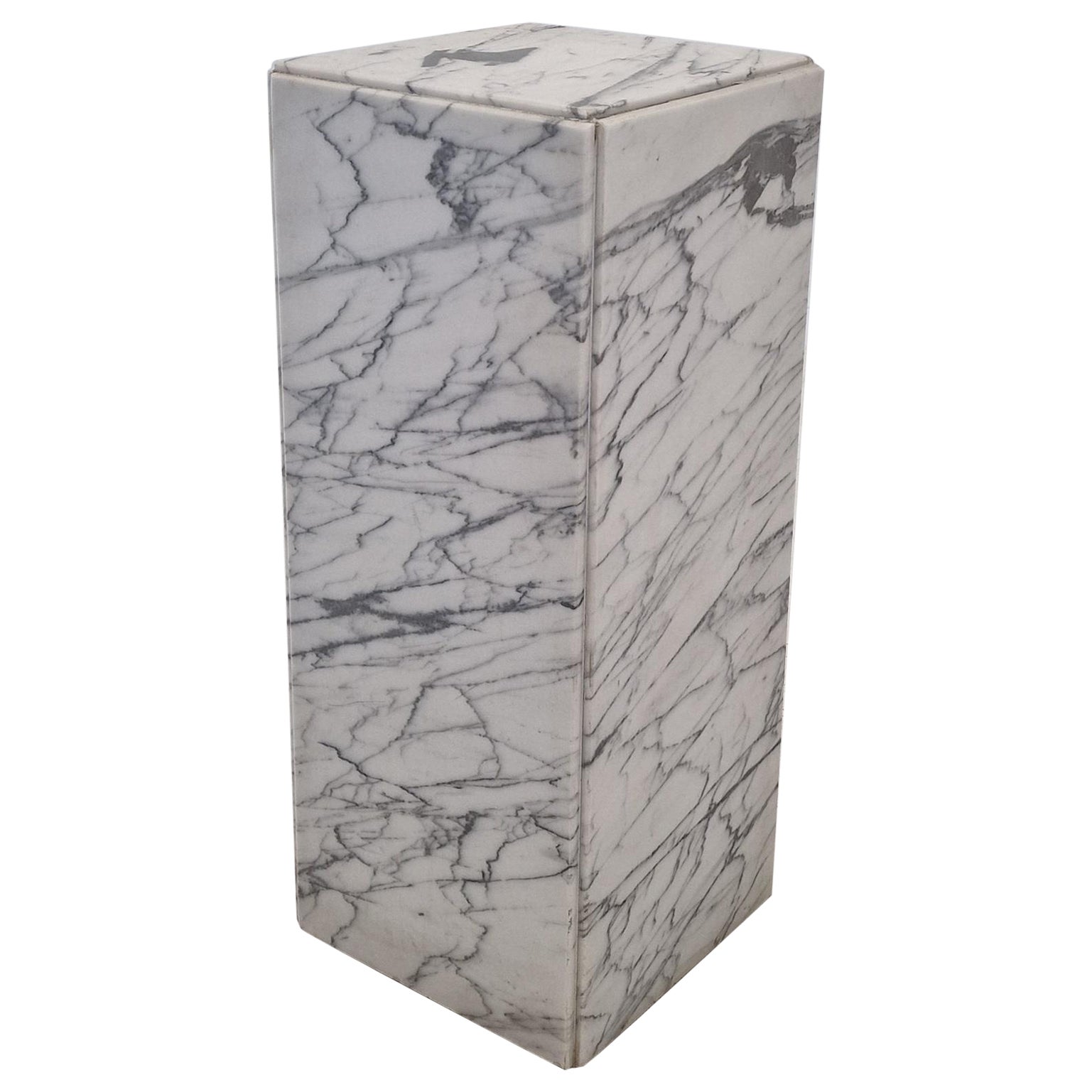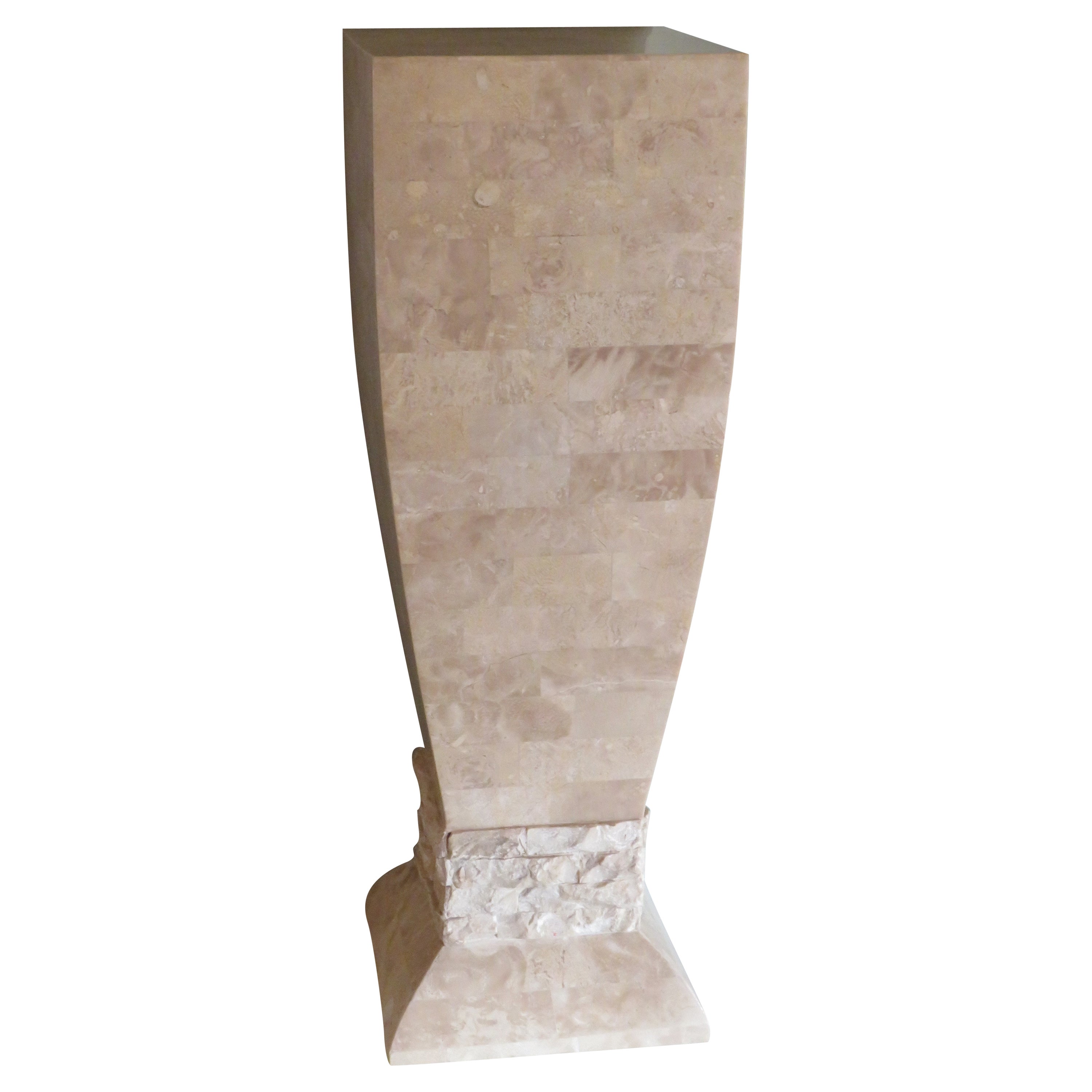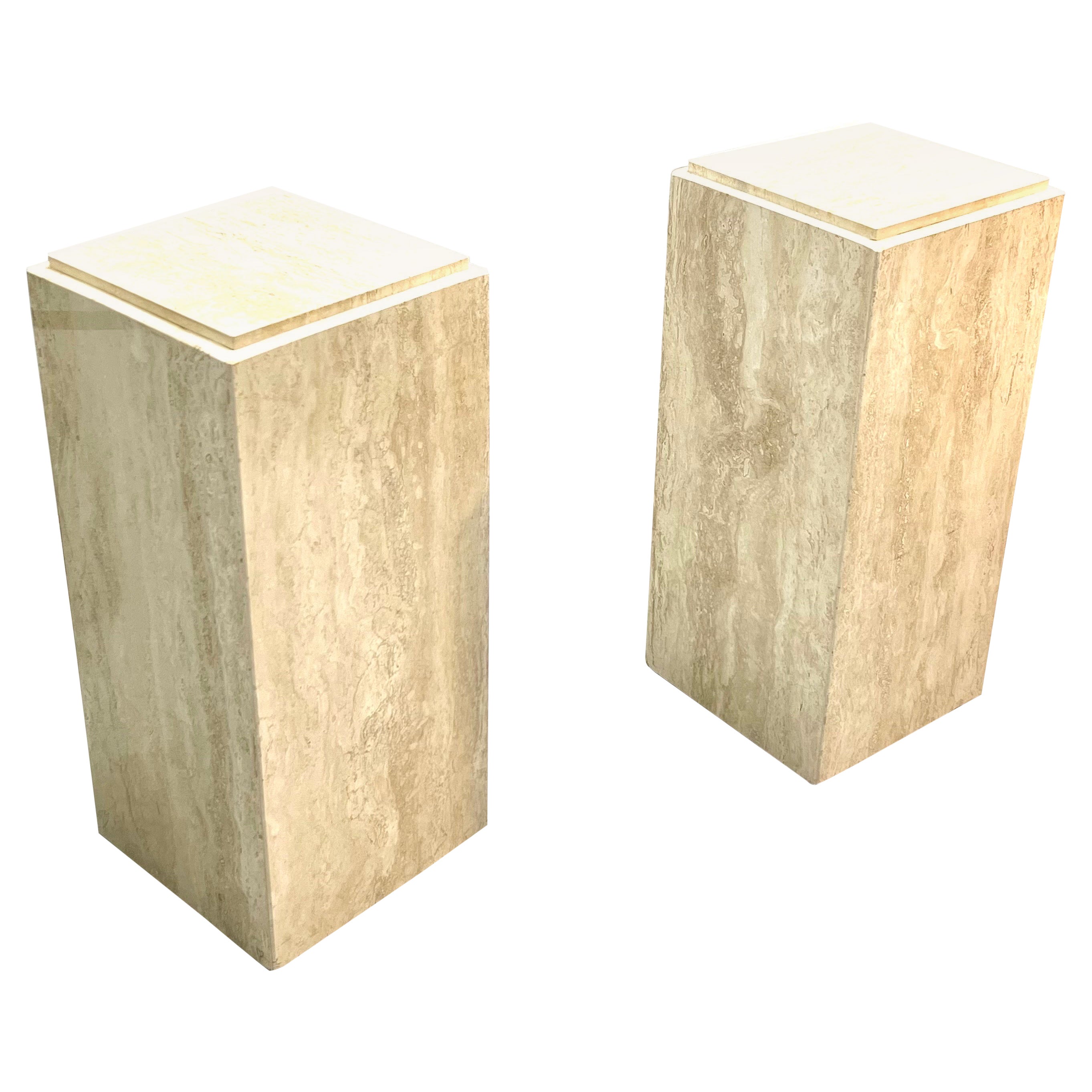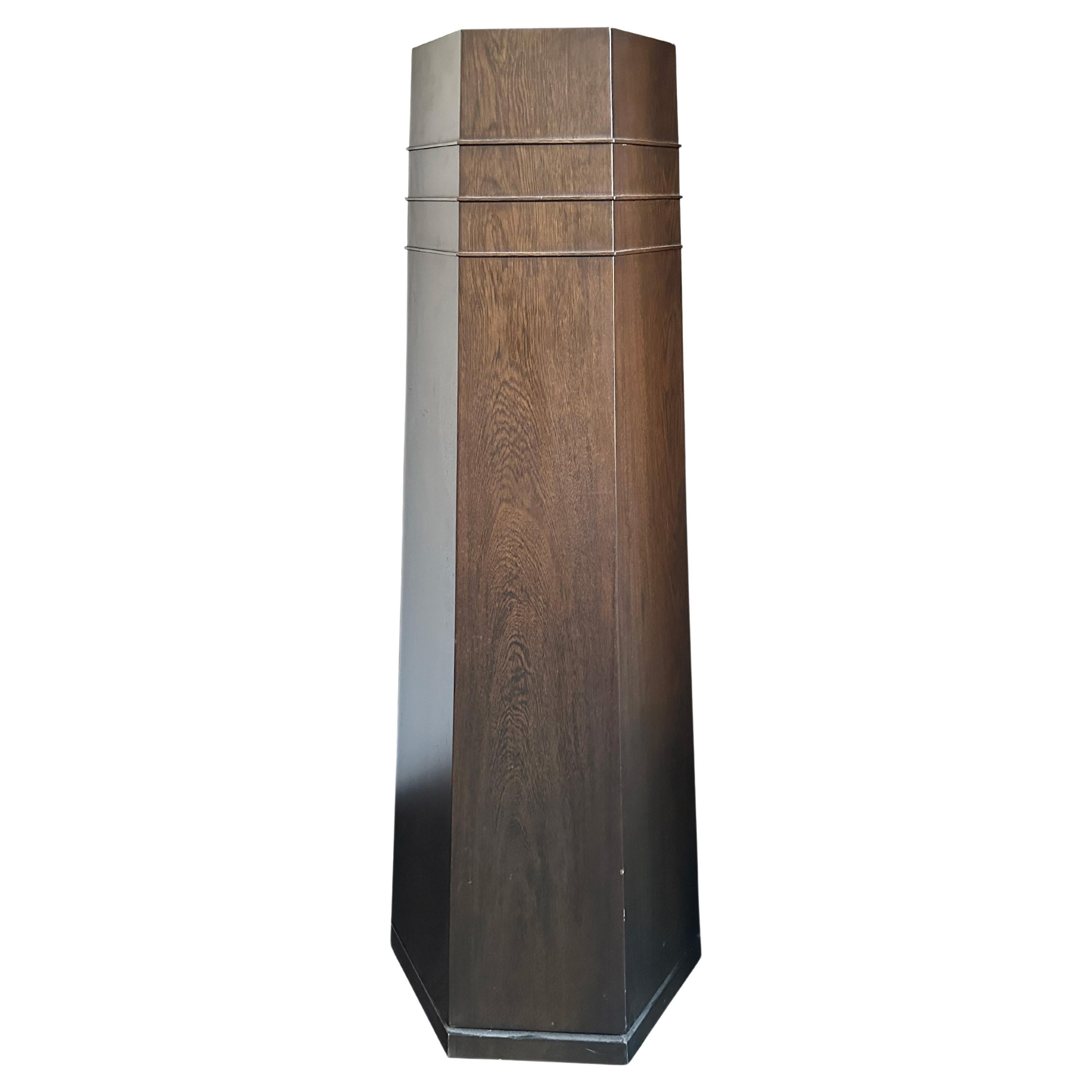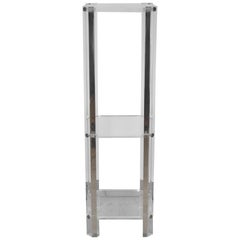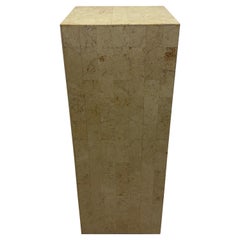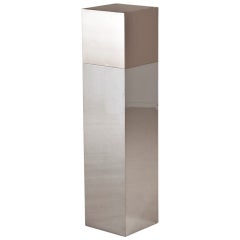
A Laminated Steel Deco Inspired Pedestal 1970s
View Similar Items
1 of 3
A Laminated Steel Deco Inspired Pedestal 1970s
About the Item
You May Also Like
- Lucite Pedestal with Canted Corners, 1970sLocated in Antwerp, BELarge Lucite pedestal or étagère from the 1970s. This 3-tier transparent Lucite or plexiglass pedestal has canted corners what gives a beautiful effect by the light. It has brass finishing details. This clear acrylic pedestal is beautiful to display vases, ceramics, little art works, plants etc. This plexi pedestal...Category
Late 20th Century European Mid-Century Modern Pedestals
MaterialsLucite
- Midcentury Tessellated Stone Pedestal Table, 1970sBy Maitland SmithLocated in Miami, FLTall tessellated stone pedestal table from the 1970s in the style of Maitland Smith.Category
Late 20th Century Philippine Mid-Century Modern Pedestals
MaterialsStone
- Minimalist Italian Travertine Pedestal, Circa 1970sLocated in Boynton Beach, FLBeautiful Italian travertine marble pedestal / column / pillar / stand. Circa 1970s Made in Italy Postomodern/modern in style. Beautiful array of colors including whit...Category
Mid-20th Century Italian Post-Modern Pedestals
MaterialsTravertine
- Art Deco Steel and Wrought Iron PedestalBy Travail FrancaisLocated in Bridgewater, CTA French Art Deco pedestal, with four tubular metal uprights and travertine stone top, decorated with hammered wrought iron stylized leaves.Category
Vintage 1920s French Art Deco Pedestals and Columns
MaterialsStone, Steel, Wrought Iron
- Luigi Saccardo UFO Pedestal Table in Steel and Glass by Maison Jansen 1970sBy Luigi Saccardo, Maison JansenLocated in Montecatini Terme, ITRound pedestal dining table model UFO with a base in brushed steel and tabletop in thick glass with a black enamel decorative circle. Designed by Luigi Saccardo and manufactured by Maison Jansen in the 1970s. Maison Jansen was a Paris-based interior decoration office founded in 1880 by Dutch-born Jean-Henri Jansen. From its beginnings, Maison Jansen combined traditional furnishings with influences of new trends including Anglo-Japanese style, the Arts and Crafts movement, and Turkish style. The firm paid great attention to historical research with which it attempted to balance clients' desires for livable, usable, and often dramatic space. Within ten years the firm had become a major purchaser of European antiques, and by 1890 had established an antique gallery as a separate firm that acquired and sold antiques to Jansen's clients and its competitors as well. In the early 1920s Jean-Henri Jansen approached Stéphane Boudin, who was then working in the textile trimming business owned by his father and brought him on board. Accounts of the arrangement vary. Speculation existed that Boudin was able to provide financial solvency to the prominent but capital-poor atelier. Boudin's attention to detail, concern for historical accuracy, and ability to create dramatic and memorable spaces brought increasing new work to the firm. Boudin was made director and presided over an expansion of the firm's offices and income. Not originally equipped with its own workrooms for producing furniture the firm began by relying upon antiques and the furniture contracted to outside cabinetmakers. By the early 1890s Maison Jansen had established its own manufacturing capacity producing furniture of contemporary design, as well as reproductions, primarily in the Louis XIV, Louis XVI, Directoire, and Empire styles. Throughout the firm's history, it employed a traditional style drawing upon European design, but influence of contemporary trends including the Vienna Secession, Modernism, and Art Deco has also appeared in Jansen interiors and in much of the custom furniture the firm produced between 1920 and 1950. Under Boudin's leadership, Maison Jansen provided services to the royal families of Belgium, Iran, and Serbia; Elsie de Wolfe, and Lady Olive Baillie's Leeds Castle...Category
Vintage 1970s French Mid-Century Modern Pedestals
MaterialsSteel, Iron
- Dutch midcentury brutalist plinth or pedestal, 1970sLocated in EVERDINGEN, NLA rare Dutch brutalist 1960s-70s plinth or pedestal with a bold, modernist design. We are currently investigating its designer. The design is reminiscent of the Bossche School (famou...Category
Vintage 1970s Dutch Brutalist Pedestals
MaterialsOak

